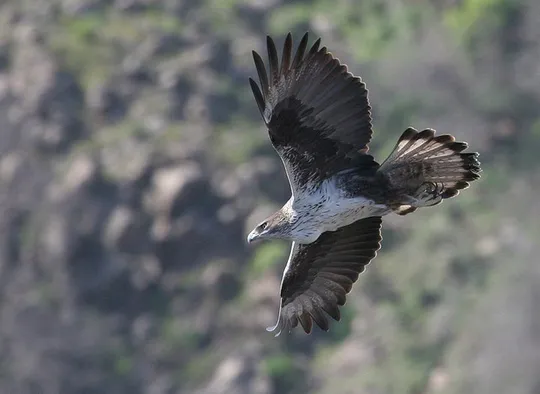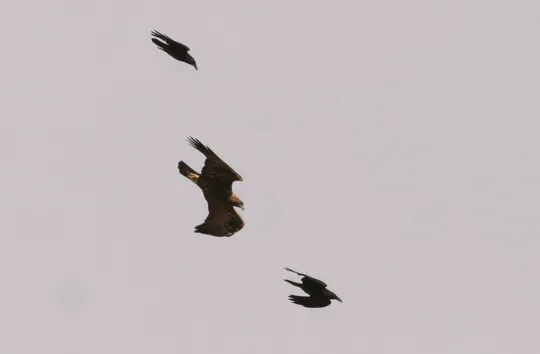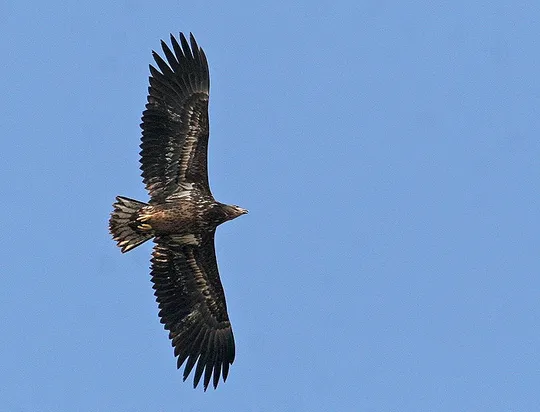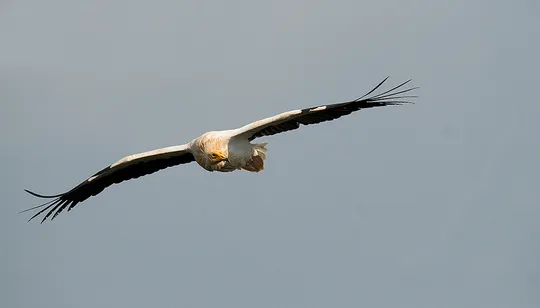Gyps fulvus
 Critically Endangered
Critically Endangered
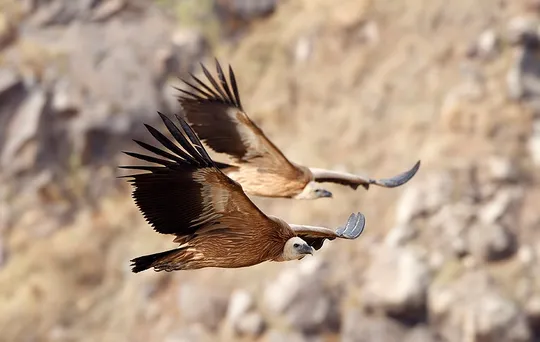
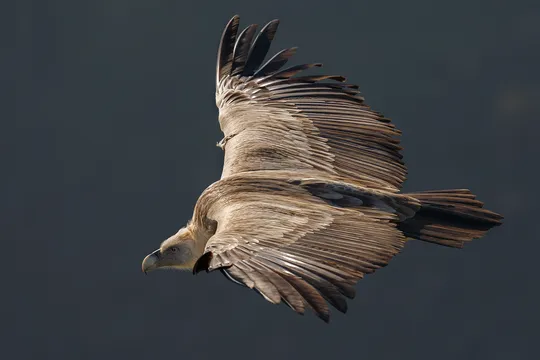
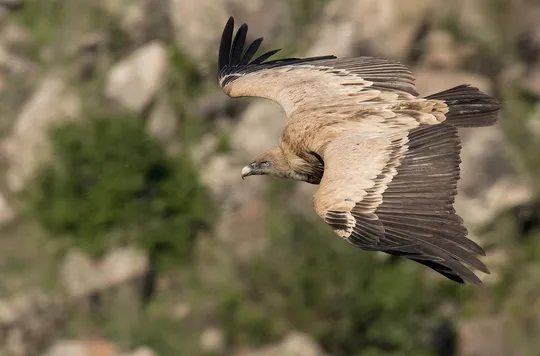
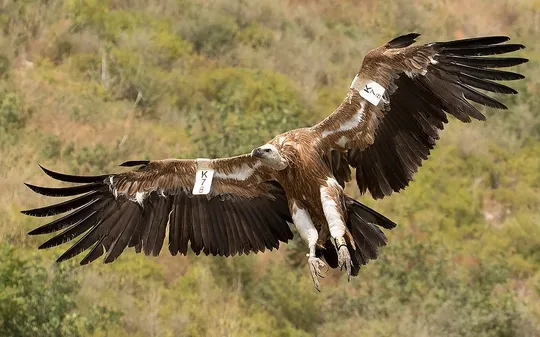
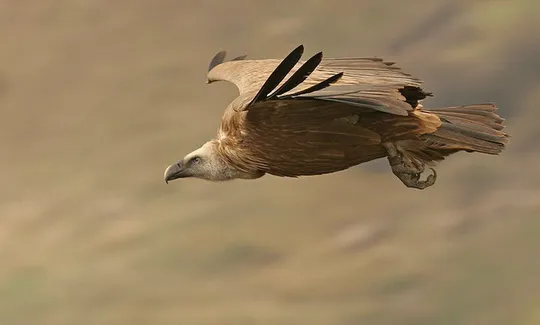
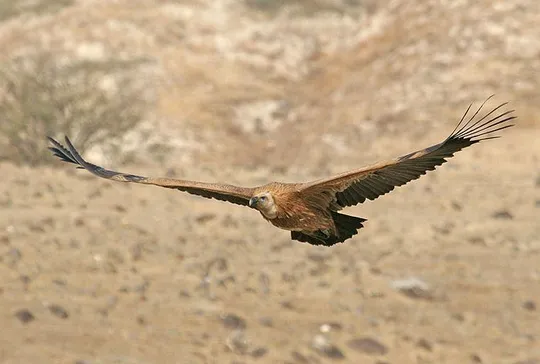
| Habitats | Desert Cliffs, Mediterranean Cliffs |
|---|---|
| Presence In Israel | Resident |
| Breeding In Israel | Breeder |
| Migration Types | Resident |
| Zoographical Zones | Mediterranean, Saharo-Arabian |
| Landscape Types | Cliffs |
| Vegetation Densities | Low |
| Nest Locations | Cliffs |
| Diet Types | Carrion |
| Foraging Grounds | Ground |
| Body Sizes | Large (over 1000g) |
| Threat Factors | Electrocution and collision with transmission wires, Human Settlements in Gorges, Hikers and rock climbers, Pesticide Poisoning, Lead Poisoning, Helicopter and aircraft activity in breeding areas, Food Scarcity, Hunting and trapping |
The Griffon Vulture is a rare resident in Israel that nests in colonies in the Golan Heights, Mt. Carmel, the Judean Desert and the Negev Highlands. It was a common breeding species until the 1950s and nested in all the mountainous and cliff areas in Israel, from the Mt. Hermon slopes to the Eilat Mountains. In the 1980s, it nested in all the areas it occupies today, as well as in the Eastern Galilee, Eastern Samaria and the northern Judean Desert.
Diverse mountainous and transected landscapes in all climate conditions. Nests on cliffs.
Extensive efforts are invested in conserving the Griffon Vulture population in Israel as part of the “Spreading Wings over Israeli Raptors”, a joint project of the Israel Electric Corporation, the INPA and the SPNI:
Continuous research and monitoring of the breeding population.
Feeding stations to ensure a regular, safe (pesticide-free) source of food.
Sanitation and removal from grazing areas of carcasses that could contain pesticides.
Power line insulation to prevent electrocution.
Captive breeding nucleus and releasing young birds into nature
The Griffon Vulture was once a common resident breeder in most parts of Israel. A gradual decrease in population size and range has been recorded since the early 1950s, due to a number of factors, including unregulated use of agricultural pesticides, changes in sanitation measures and veterinary care of livestock, electrocution on power lines, disturbances at the nest, etc. The Griffon Vulture population in Israel is critically endangered and survives only through intensive conservation efforts.
In order to maintain a sustainable Griffon Vulture population, it is necessary to reduce the number of birds decimated each year by pesticides, lead poisoning, electrocution and collisions with power lines and infrastructure. Until these factors are dealt with (by legislation, enforcement and cooperation with the Israel Electric Corporation and other stakeholders), it is necessary to continue with the above-mentioned conservation efforts.
- הצופה, א., צוער, א., דולב, ע. וסבח, ע. 2017. מצב הנשרים חורף 2017 : ספירה וקינון. דו"ח רשות הטבע והגנים.
- הרלינג, א. 2001. סיכום סקר קינון דורסי יום בשמורת עין גדי. דו"ח רשות הטבע והגנים.
- מירוז, א. והצופה, א. 2014. סיכום סקר קינון עופות דורסים במדבר יהודה. דו"ח רשות הטבע והגנים.
- פז, ע. 1986. עופות. מתוך אלון, ע. (עורך), החי והצומח של ארץ ישראל. כרך 6. הוצאת משרד הביטחון, ישראל.
- פרידמן, ג. 2010. סיכום סקר דורסי יום במחוז צפון. דו"ח עבור רשות הטבע והגנים והחברה להגנת הטבע.
- Mendelssohn, H. 1972. The impact of pesticides on bird life in Israel. ICBP 11:75-104.
- Shirihai, H., 1996. The Birds of Israel. Academic Press, London.
- Symes, A. 2013. Species generation lengths. Unpublished, BirdLife International.
- Species page at Birdlife International
Current Occupancy Map
| Data Missing | Sporadic | Limited Sites | Low Density | High Density |
|---|---|---|---|---|
| 0 | 0 | 0 | 0 | 0 |
Distribution maps
The maps presented here provide visual information on the distribution of species in Israel from the past and present, and the changes in occupancy and breeding density during the comparison period. For further reading
Relative Abundance 2010-2020
Breeding density values in the current decade as determined from experts' opinion and observations from databases.
| Data Missing | Sporadic | Limited Sites | Low Density | High Density |
|---|---|---|---|---|
| 8 | 12 | 12 | 21 | 19 |
Relative Abundance 1980-1990
Density values based primarily on the book The Birds of Israel (Shirihai 1996).
| Data Missing | Sporadic | Limited Sites | Low Density | High Density |
|---|---|---|---|---|
| 5 | 14 | 14 | 17 | 22 |
Occupancy 1990-2020
The map shows differences in the species breeding distribution between the 1980's breeding map and the current weighted breeding evaluation. Negative value - species previously bred in the grid and is not presently breeding; positive value - species has not previously bred in the grid and is currently breeding.
| Data Missing | No Change | Occupancy Increase | Occupancy Decrease |
|---|---|---|---|
| 6 | 35 | 1 | 9 |
Change in Relative Abundance 1990-2020
The map shows the changes in the relative abundance of a species in each of the distribution grids between the breeding map of the 1980s and the weighted current breeding evaluation. Negative values - decline in abundance; positive values - increase in abundance; zero - no change in abundance.
| 80 to 100 | 50 | 20 to 30 | No Change | 30- to 20- | 50- | 100- to 80- | Data Missing |
|---|---|---|---|---|---|---|---|
| 0 | 4 | 2 | 22 | 12 | 14 | 11 | 16 |
| Rarity | |
|---|---|
| Vulnerability | |
| Attractiveness | |
| Endemism | |
| Red number | |
| Peripherality | |
| IUCN category | |
| Threat Definition according to the red book |
 Contributed:
Contributed: 